Lavender is a popular flower that has been prized for centuries due to its scent, flavor, and healing properties. Today, you buy anything from lavender-scented candles and soaps to aromatherapy, essential oils, medicines, and even flavorings for cooking. But did you know that there are over 45 known species of lavender? Take a look at 10 types of lavender and how they are different!
English Lavender (Lavandula angustifolia)
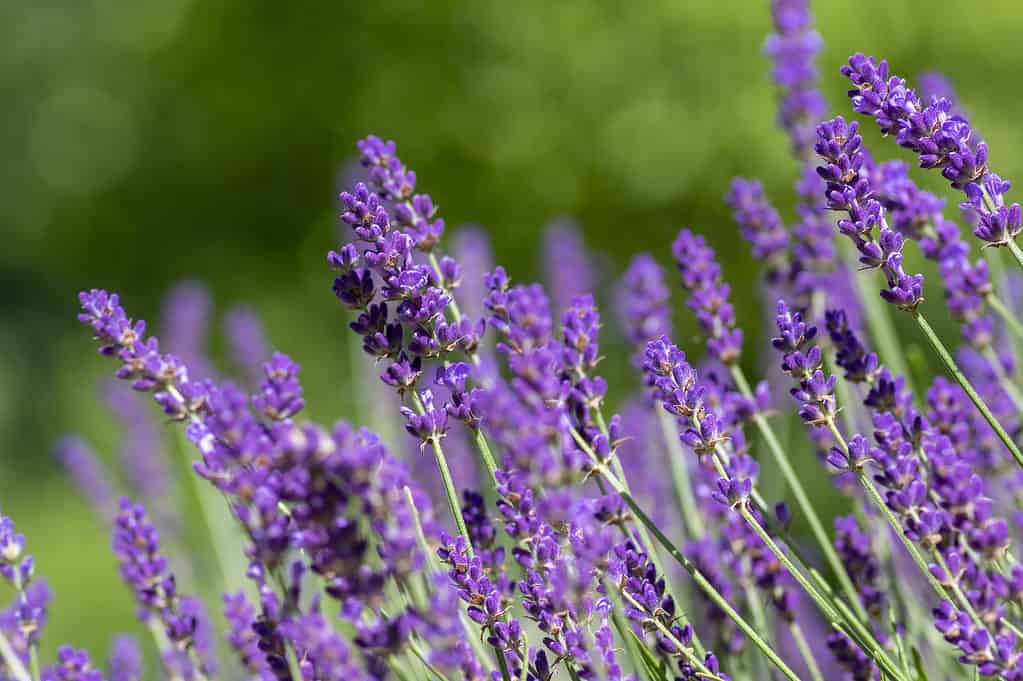
All lavender plants belong to the scientific genus Lavandula.
©iStock.com/Iva Vagnerova
One of the most well-known types of lavender is English lavender, also called common lavender or simply just lavender. These lovely plants grow 1 to 3 feet tall and produce fragrant, blue-violet flowers. English lavender isn’t a picky plant as long as it has good drainage and plenty of sun. It’s also an excellent choice for attracting pollinators like bees and butterflies. English lavender smells wonderful and many people use it in aromatherapy and cooking.
French Lavender (Lavandula stoechas)
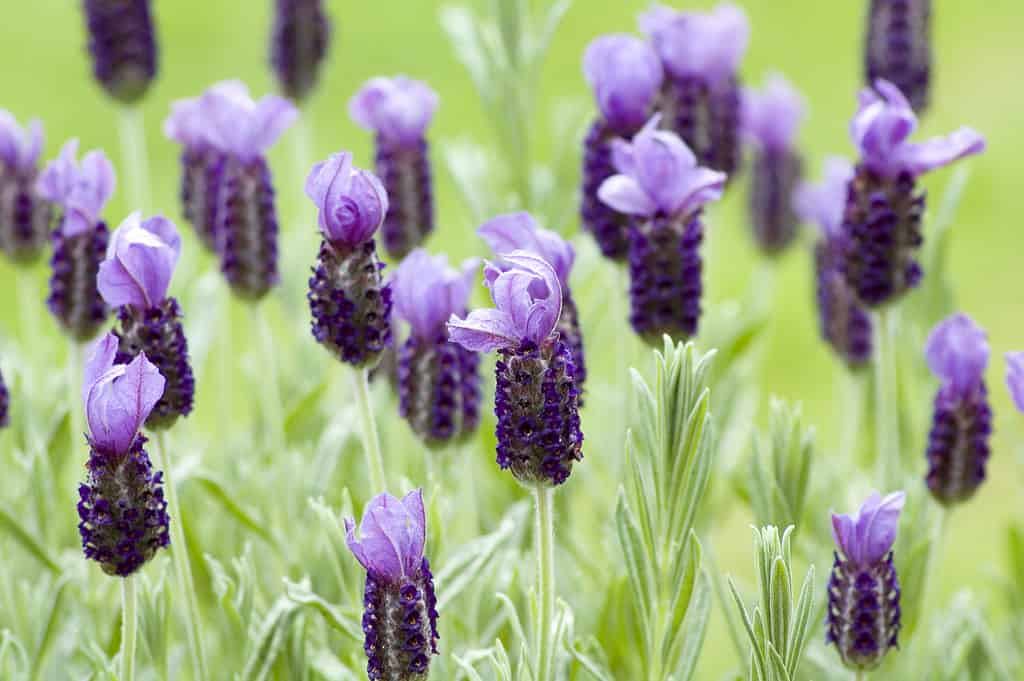
The term “Lavadula” means “to wash” and refers to how historically lavender was used in bathing.
©gardendata/ via Getty Images
Also known as topped lavender or Spanish lavender, French lavender is an evergreen shrub that usually grows 3 to 4 feet tall. Its leaves are fuzzy and gray, while its small flowers are pink or purple. French lavender also has large, colorful bracts (leaves around the flowers that look like petals). The bracts look like rabbit ears poking up on top of the flowers and are a rich lavender color or, on occasion, white.
Fringed Lavender (Lavandula dentata)
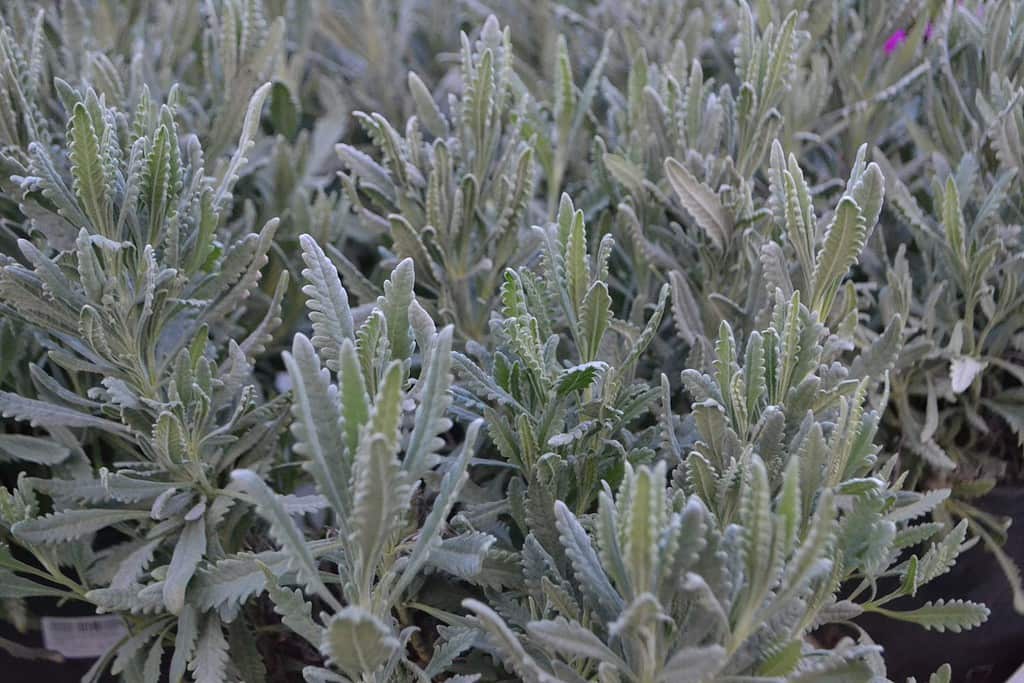
“Dentata”
is Latin for “toothed”.
©Edita Medeina/Shutterstock.com
The beautiful purple flowers of fringed lavender have a strong, lavender scent that lasts for a long time. The plant’s name comes from its unique gray-green leaves, which have little teeth along the edges like fringe. While the main “bush” of a fringed lavender plant grows around 2 feet on average, its flowers can reach up to 3 feet high. The flowers bloom on spikes at the end of long stems extending above the rest of its foliage.
Portuguese Lavender (Lavandula latifolia)

When it gets hot and dry during the summer, the leaves of Portuguese lavender plants turn silver.
©Nahhana/Shutterstock.com
With a scent even stronger than common lavender, Portuguese lavender is also common in aromatherapy. However, the aroma of Portuguese lavender has more of a calming, medicinal smell (camphor), so it is often grown far from common lavender plants. The Portuguese lavender produces pale lilac flowers on long, leafless stems. Sometimes it is called broadleaf lavender because its gray-green leaves are much wider than other lavender species.
Egyptian Lavender (Lavandula multifida)
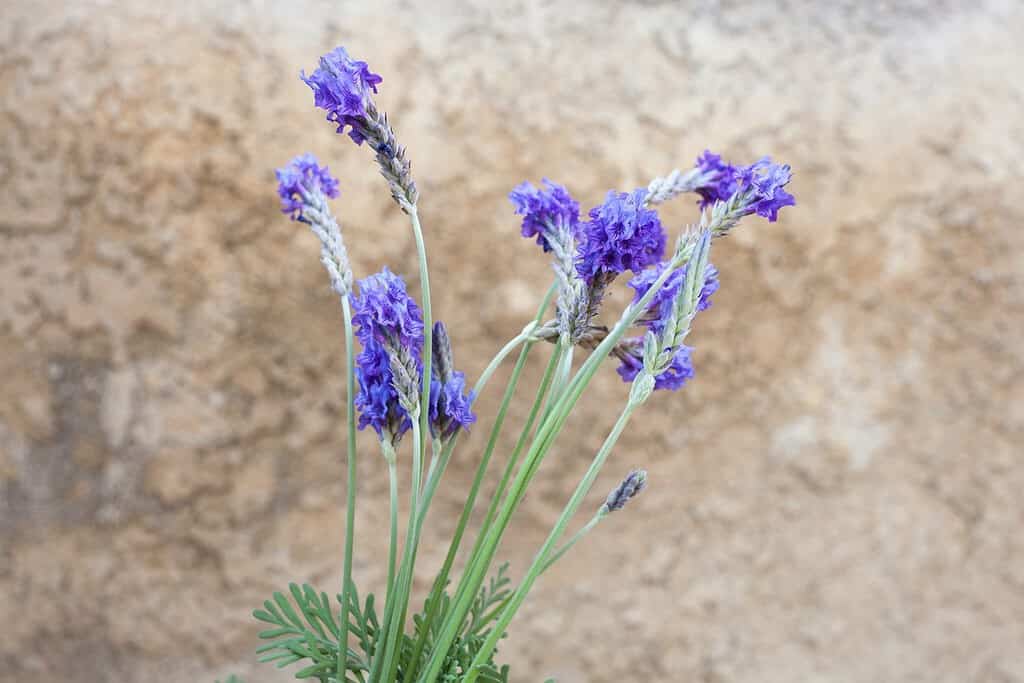
Sometimes Egyptian lavender flowers have three-pronged stems, making them look like flowery tridents.
©Heather Lucia Snow/Shutterstock.com
Also known as fern leaf lavender, Egyptian lavender has a light, oregano– or pine-like scent. Its name comes from its feathery green leaves, which look like fuzzy ferns. Tiny blue-violet flowers bloom at the end of the plant’s long stems. These flowery spikes and textured leaves make the Eygptian lavender a popular ornamental plant. Egyptian lavender is also used medicinally, in cosmetics, and for cooking.
Green Lavender (Lavandula viridis)
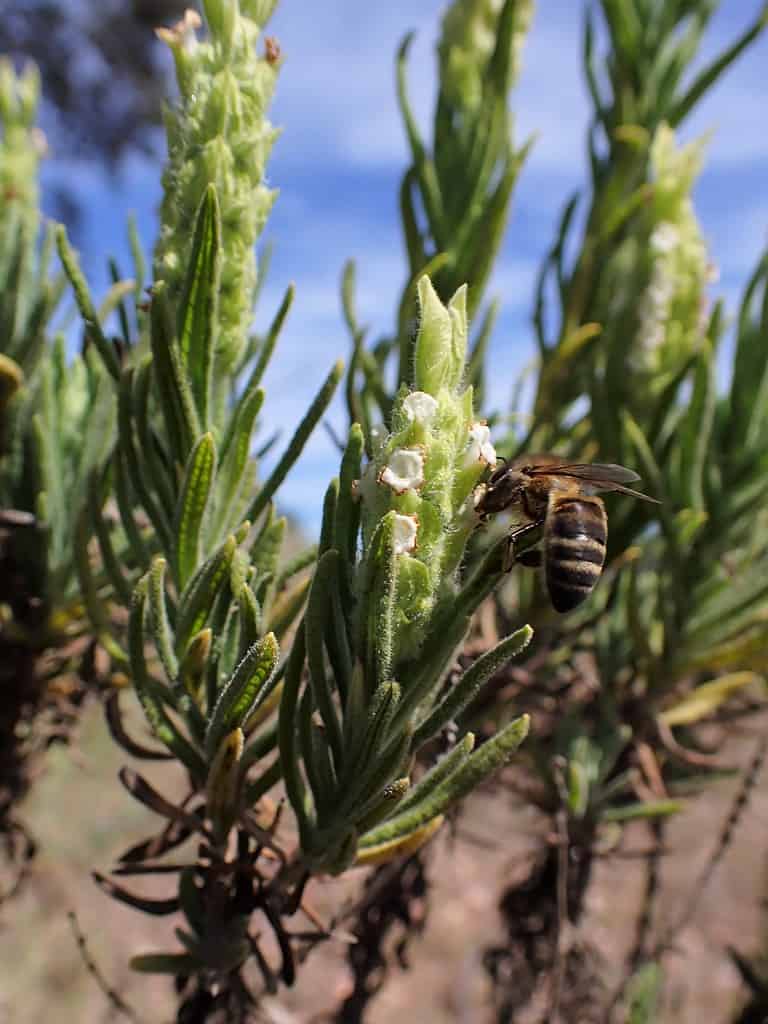
Green lavender grows up to 2 feet tall and 2 feet wide.
©Krzysztof Ziarnek, Kenraiz / CC BY-SA 4.0, via Wikimedia Commons - Original / License
Despite their name, not all types of lavender plants actually produce lavender-colored flowers! Green lavender, for example, is a rounded evergreen shrub with tiny white flowers and greenish-white bracts. Its leaves and flowers look very similar to French lavender, except they are white and green rather than purple or violet. Green lavender originated in the Mediterranean Basin, particularly in Portugal and Spain. It grows up to 2 feet tall and 2 feet wide and prefers full sun.
Woolly Lavender (Lavandula lanata)
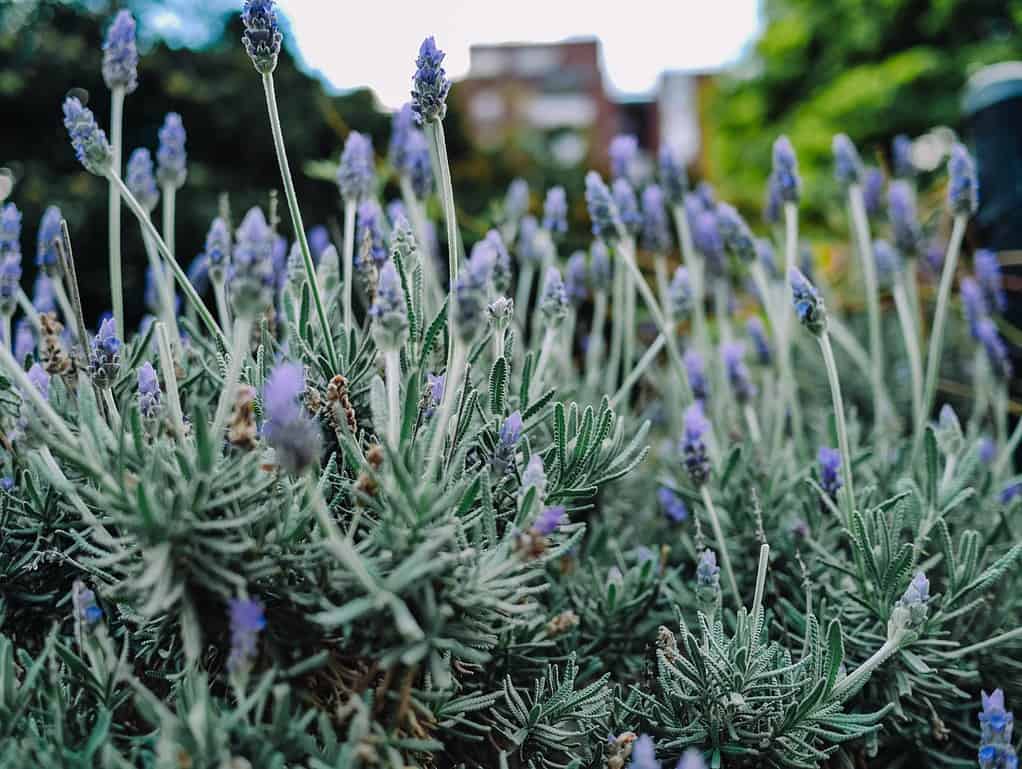
Lavender plants belong to the mint family (Lamiaceae).
©khoamartin/Shutterstock.com
Woolly lavender gets its name from the soft, woolly texture of its leaves. These stunning lavender plants bloom in the summer, producing rich purple flowers that contrast beautifully with their silver-white leaves. They grow around 1.3 feet tall on average and produce a lovely aromatic scent. Because of this, woolly lavender is common in essential oils, perfumes, and linen sachets.
Nimmo’s Lavender (Lavandula nimmoi)

The island of Socotra, home to Nimmo’s lavender, is in the Indian Ocean.
©sunsinger/Shutterstock.com
Nimmo’s lavender only grows naturally on Socotra, an island near Yemen. In its native habitat, it grows in dry, rocky areas, forming a bushy plant with skinny green leaves. The plant’s flowers are small and light purple, with a tiny pop of yellow in the center. Nimmo’s lavender has been used in traditional medicine for things like coughs, fevers, colds, and skin problems.
Round-Leafed Lavender (Lavandula rotundifolia)
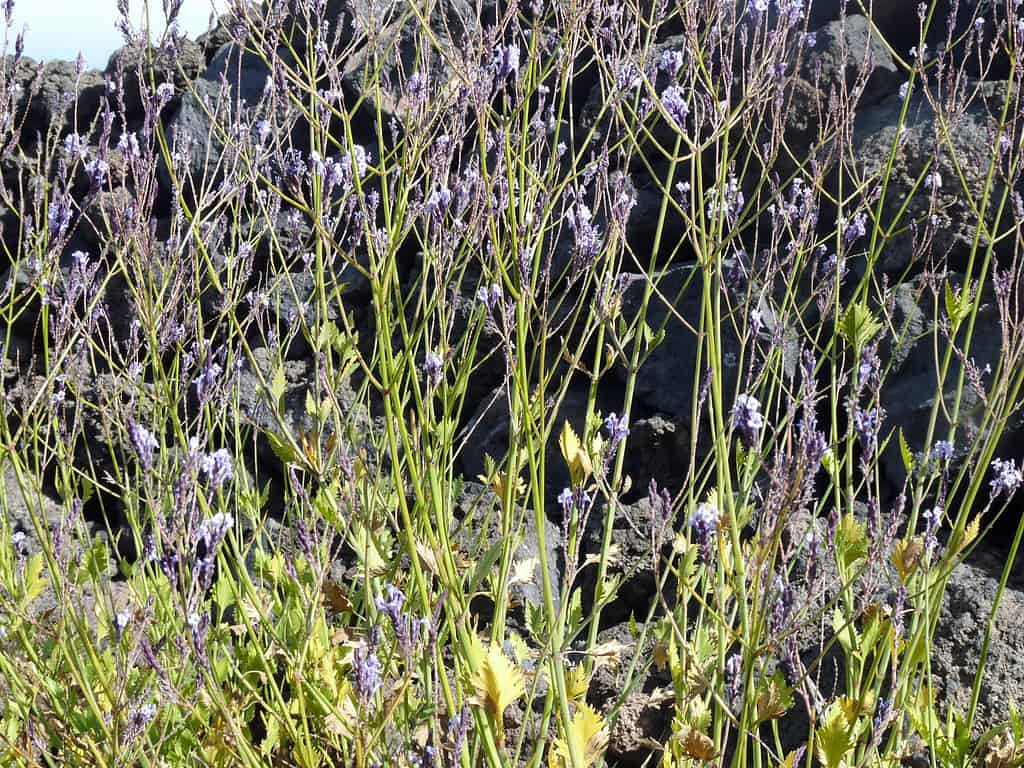
The local name for round-leafed lavender is “aipo”.
©Ji-Elle / CC BY-SA 3.0, via Wikimedia Commons - Original / License
In the wild, round-leafed lavender only grows in Cape Verde. It has long, thin leaves that look kind of like blades of grass. Some of these leaves, however, are a bit wider at the tip and look like arrowheads. The flowers of the round-leafed lavender come in shades of pink and purple, blooming together in a spikey cluster like a colorful bottle brush.
Lavandin (Lavandula x intermedia)
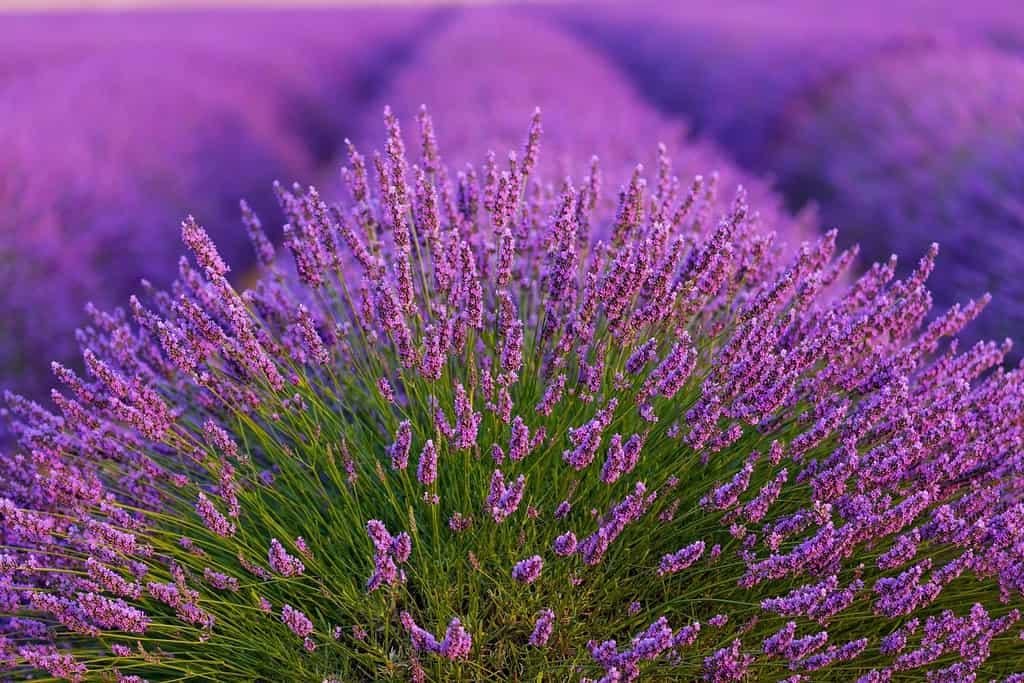
Lavadin is commonly grown for lavender oil.
©Juan Carlos Munoz/Shutterstock.com
The last type of lavender on our list is actually a hybrid between English lavender (Lavandula angustifolia) and French lavender (Lavandula latifolia). Lavadin is popular because it blends the best of both species, growing tall and producing lots of flowers. It also has a very strong scent that is often used in things like soap and lotion.
The photo featured at the top of this post is © gardendata/ via Getty Images
Thank you for reading! Have some feedback for us? Contact the AZ Animals editorial team.







